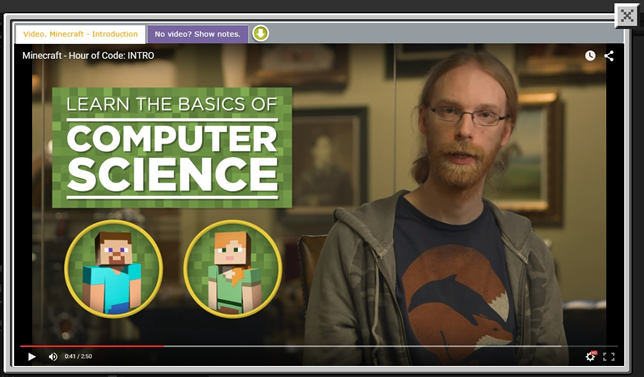Minecraft Gets Hour of Code Tutorial
- By Dian Schaffhauser
- 11/16/15
Computer Science Week is fast approaching, and Microsoft has teamed up with the organizers behind Minecraft and Hour of Code to encourage students to pick up coding within the Minecraft environment.
The Redmond-based company worked with Mojang and Code.org to develop a new tutorial that introduces players to basic coding skills by pushing them to navigate, mine, craft and explore in a 2-D "Minecraft" world by plugging together blocks to complete actions and generate computer code. Players may face 14 different challenges to explore coding concepts they learn through the tutorial.

The tutorial features Steve and Alex, characters who are well known by fans of the virtual environment. The program uses Blockly, a language that allows users to drag and drop puzzle-piece-like blocks together into stacks to create programs. Under the hood, they're also generating JavaScript commands. Along the way, students will learn basic programming concepts such as the use of commands, repeat loops and if statements.
Hour of Code is a global campaign to get kids involved in coding. Although activities happen year round, a special emphasis is placed on coding during the week of December 7-13.
"A core part of our mission to empower every person on the planet is equipping youth with computational thinking and problem-solving skills to succeed in an increasingly digital world," said Satya Nadella, Microsoft's chief executive officer, in a press release. "With Minecraft and Code.org, we aim to spark creativity in the next generation of innovators in a way that is natural, collaborative and fun."
"'Minecraft' is a special game that girls and boys alike often can't be pried away from," added Code.org CEO and co-founder Hadi Partovi. "Microsoft continues to be Code.org's most generous donor and one of the largest supporters of the worldwide movement to give every student the opportunity to learn computer science. This year's 'Minecraft' tutorial will empower millions of learners around the world to explore how a game they love actually works and will inspire them to impact the world by creating their own technology or apps."
About the Author
Dian Schaffhauser is a former senior contributing editor for 1105 Media's education publications THE Journal, Campus Technology and Spaces4Learning.